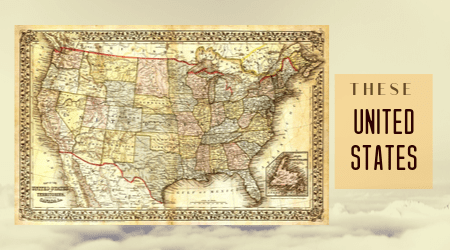-
U.S. States
- Alabama: The Heart of Dixie – Lesson
- Alaska: The Last Frontier – Lesson
- Arizona: The Grand Canyon State – Lesson
- Arkansas: The People State – Lesson
- California: A US State and a Mythical Island – Lesson
- Colorado: Pikes Peak or Bust – Lesson
- Connecticut: War, Trade, and Fundamental Orders – Lesson
- Delaware: A Little State with a Big History – Lesson
- Florida: A Contested Land – Lesson
- Georgia: A Refuge for Debtors and the Poor – Lesson
- Hawaii: A Land of Volcanoes – Lesson
- Idaho: The Gem of the Mountains – Lesson
- Illinois: The Land of the Illini – Lesson
- Indiana: Land of the Indians – Lesson
- Iowa: From Conflict to Corn Belt – Lesson
- Kansas: On the Trail West – Lesson
- Kentucky: Through the Cumberland Gap – Lesson
- Louisiana: The Heart of One of America’s Best Deal – Lesson
- Maine: The Pine Tree State – Lesson
- Maryland: A New Start for Religious Freedom – Lesson
- Massachusetts: The Bay State – Lesson
- Michigan: Water Winter Wonderland – Lesson
- Minnesota: Land of 10,000 Lakes – Lesson
- Mississippi: The Magnolia State – Lesson
- Missouri: The Unwilling Slave State – Lesson
- Montana: The Treasure State – Lesson
- Nebraska: The Cornhusker State – Lesson
- Nebraska: The Cornhusker State – Quiz
- Nevada: The Silver State – Lesson
- Nevada: The Silver State – Quiz
-
U.S. State Capitals
Florida: A Contested Land – Lesson
The Spanish were the first Europeans to explore Florida – but the French weren’t far behind.
In 1539, Hernando de Soto came looking for gold and silver. His venture lasted for about four years. He and his soldiers camped in the area now known as Tallahassee. In 1542, de Soto died, as did his quest.
By this time, word of this new territory had spread. Spain, which regularly shipped goods up the Gulf Stream through the straits that run alongside the Florida Keys, looked eagerly towards acquiring the land for itself. Spanish ships were constantly being attacked by pirates, so the new area could make their lives just a little easier.
In 1562, the French became involved when Jean Reibault explored the area. Rene Goulaine de Laudonniere followed two years later and ended up establishing Fort Caroline. The arrival of the French concerned Spain. Pedro Menendez de Aviles arrived and established the first permanent European settlement for Spain. He attacked and killed all the French settlers there, except for those who claimed to believe in the Roman Catholic faith.
 More explorers came to the region and Spain and France continued to fight over the land. Spain held dominance for a couple of centuries until the British took notice and decided to get a piece of the pie, too.
More explorers came to the region and Spain and France continued to fight over the land. Spain held dominance for a couple of centuries until the British took notice and decided to get a piece of the pie, too.
After the Seven Years’ War (1756-63), Britain gained control of Florida by giving Havana, Cuba (which the English had captured during the war) to Spain. After Spain evacuated the area, there were hardly any people to populate the land. Britain started advertising to draw more people in, but then the American Revolutionary War broke out. Even though most of those in Florida were loyal to Great Britain, it still resulted in a lot of “Americans” moving to the area. As part of a treaty, Spain reacquired some of the Florida area it had lost.
The American military started exploring the area and after several expeditions and battles, Spain ceded Florida to the United States in 1821. General Andrew Jackson was crucial in negotiating the treaty.